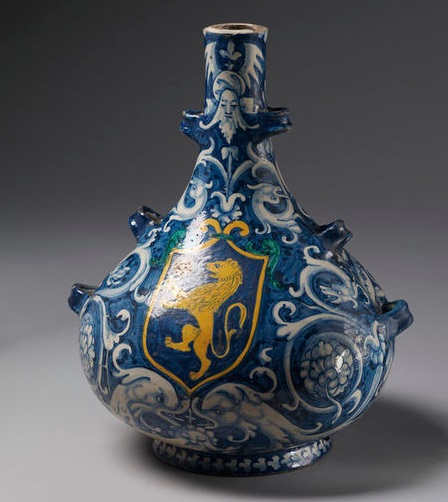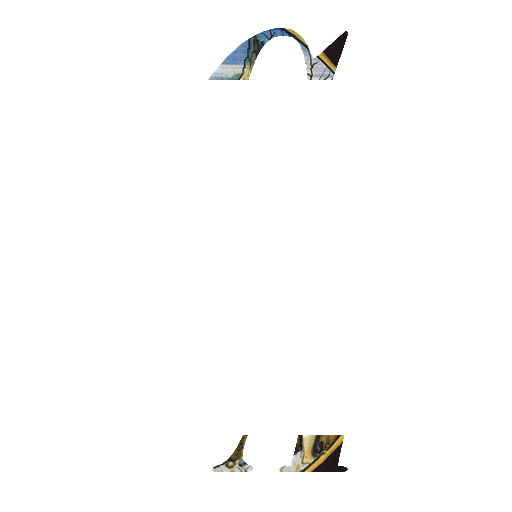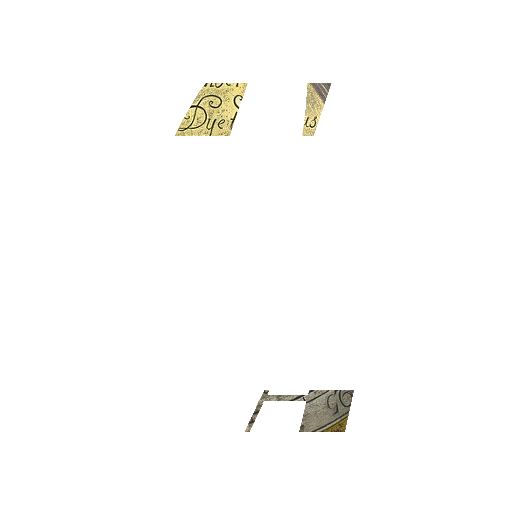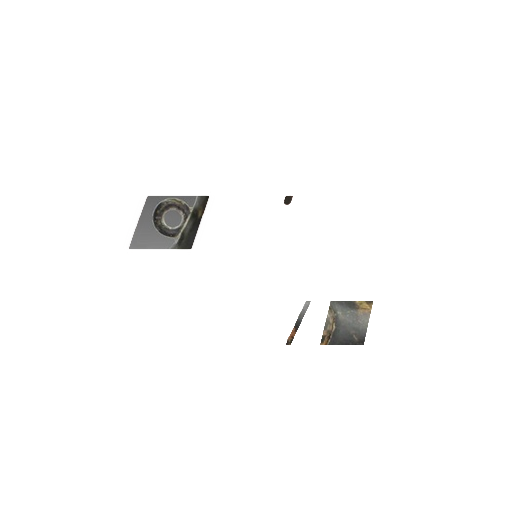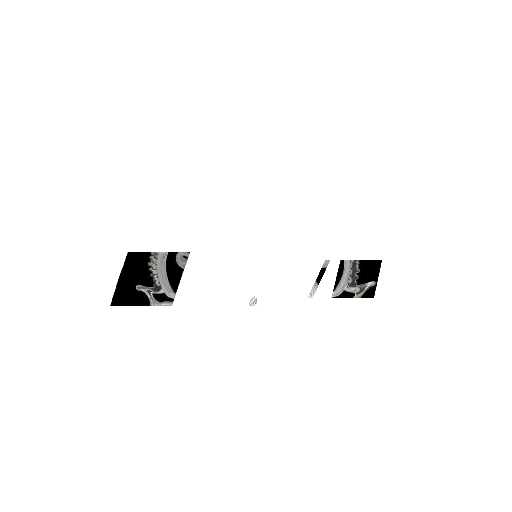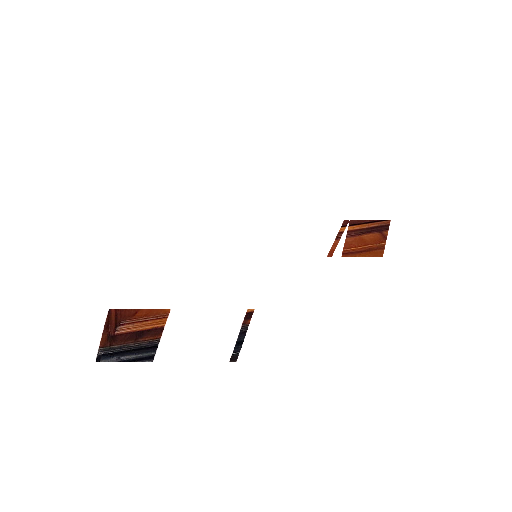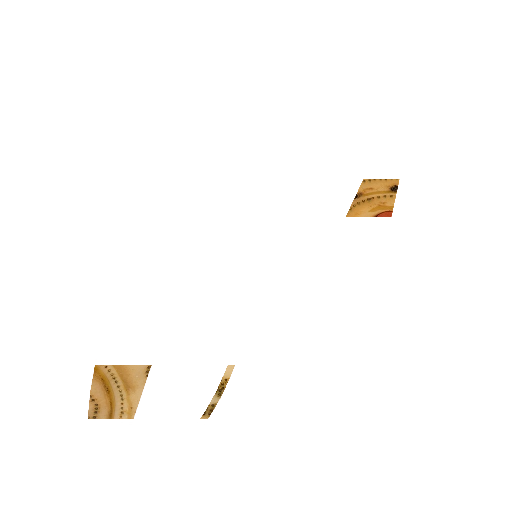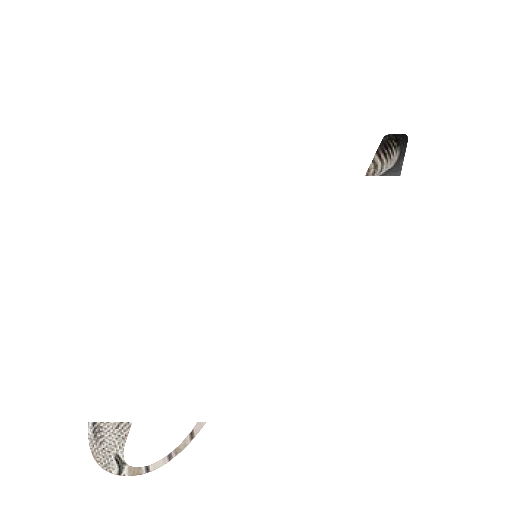Deruta ware, outstanding tin-glazed earthenware, or majolica, produced during the first half of the 15ᵗʰ century in the town of Deruta on the Tiber River, near Perugia, Italy.
Deruta ware is characterized especially by a unique mother-of-pearl, metallic lustre and by certain decorative features. In the art of lustre, Deruta potters, who introduced an iridescent gold lustre decoration, may be held second only to the potters of Gubbio. Although Deruta majolica displays most of the decorative features common in the Renaissance, it is innovative in at least two respects: the molding of plates with a design in slight relief, the lower part coloured dark to give an even more lustrous effect; and the division of the broad borders of the plates into panels with alternating geometric stripes. These dishes, illustrating subjects from mythology or religion, are at times somewhat harsh and heavy, and the designs of vases and jars are sometimes flat or crude, but, at its most successful, Deruta majolica has a distinctive flamboyance.
Diruta, near Perugia, was one of the first Italian towns to set up a fabrique for making majolica, though the earliest ware appears to have been tin-enamelled terra cotta. According to Lazari, a frieze was executed, in 1461, for the church of St. Bernardino, by Antonio de Duccio, one of the pupils of Luca della Robbia. From Perugia the process of applying tin-enamel to terra cotta spread to Diruta, where in the 16ᵗʰ century it advanced to the perfection of coloured majolica which is distinguished by a great elegance of style and design, and by a charming nacreous lustre. The earliest dated piece, fatta in Deruta, 1535, was in the Foun taine Collection. A plate is thus described: " Painted in blue grisaille, in parts touched or grounded with orange; composition, the Nativity or ` Persepio,' after a design or picture by Pietro Perugino. Majolica of Diruta, near Perugia. Circa 1520-30. Diameter 12 in." That famous expert, J. C. Robinson, wrote this description for the catalogue of the exhibition in the museum at South Kensington, June 1862.
Was it a monk or an order of monks who made that other Diruta ware distinguished by its brassy, golden lustre, its dull enamel, and its poor drawing, with outlines in brown or blue ? A number of pieces signed El Frata belong to this class, and they have been assigned to Diruta because they resemble a lustred piece, dated 1541, which was marked El Frate in Deruta pt., and some unlustred pieces from the same fabrique with inscriptions such as : i Deruta il Frate fiensi, 1545; and 1545 in Deruta Frate fecit. Assuming these pieces were the work of the brotherhood, we may learn to recognise them by the rude, poor drawing and by the inferiority of the colours. They suffer by contrast with the superior work of the best period, which is often marked with the letter C with a paraph-see the Marks. Similar products of Diruta show almost always upon the base a network of fillets, traced either in blue or in lustre and blue. This network is recognised as one of the most distinctive and characteristic signs of the finest ware, which vies with that of Pesaro and Gubbio, ex cepting in the ruby lustre, which is pale and faint. On the other hand, the " madreperla " lustre is scarcely excelled by that of Pesaro, to which fabrique the earlier and more important productions are attributed on evidence which is scarcely convincing. That lustre was a golden pigment of peculiarly pearly effect.
"It is extremely difficult" says Mr. Fortnum in his handbook on " Maiolica," " to decide with any degree of certainty as to whether some individual early specimens of the lustred ware, alluded to, be of Pesaro, of Gubbio, or of Diruta workmanship. We have little hesitation in assigning the dish in the woodcut to Diruta; the 'Dance of Cupids is after Marc Antonio. The similarity of the process necessary to such productions entails a corresponding similarity of result, but we notice a somewhat coarser grounding, a golden reflet of a brassy character, a ruby when it (rarely) occurs of a pale dull quality, looser outlines of a colder and heavier blue, and, in the pieces not lustred the same tones of colour, a dark blue approaching to that of Caffaggiolo in depth, but wanting in brilliancy, the use of a bright yellow to heighten the figures in grotesques, etc., in imitation of the golden lustre, and a thin green."
Having read this after coming to my own conclusions as set out earlier, the analogy between the opinions is sufficiently striking, though I had failed to comment on the coarse, opaque ground, creamy in colour, and on the deep dull blue. Further, it may be noted that the flesh is usually shaded in blue.
Some of the pieces of Diruta and other Italian ware, such as the dishes intended for wall-decoration piatti da pompa -were over 15 inches in diameter, and a projecting rim on the base of each was invariably pierced with two holes to receive a cord by which it could be suspended. The smaller dishes, bacini or bacili, saucer-shaped plates, frequently have similar holes, which furnish no clue as to origin. These early decorative pieces are covered at the base by a coarse yellow glaze; the upper surface was painted with white slip, upon which the coloured ornament was applied sometimes in conjunction with the scratched designs, sgrafiliti, which in Italy were brought to a high degree of perfection, though the Diruta ware is more distinguished for ornament in both high and low relief, arabesque scrollwork, with masks, hippocampi, etc. Such raised arabesques were frequently ornamented with lustre, shaded with blue.
Exact reproductions of the 16ᵗʰ century majolica are still made in Italy. In Diruta, in 1771, Gregorio Caselli was the proprietor of a fabrique in which lustred majolica fina was manufactured.
A DERUTA MAIOLICA PLATE
circa 1520
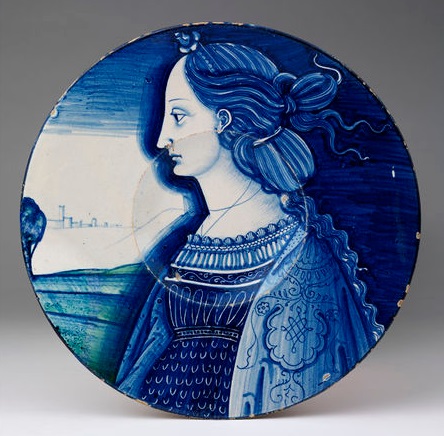
A DERUTA MAIOLICA PLATE
circa 1540
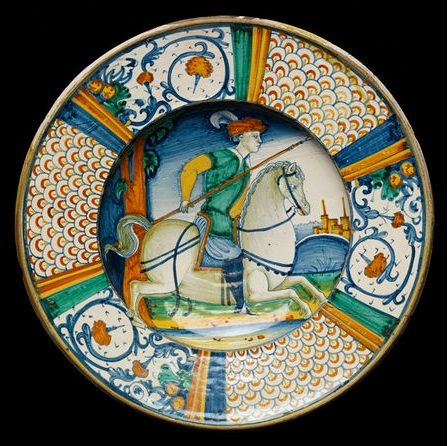
A DERUTA MAIOLICA ALBARELLO
circa 1500
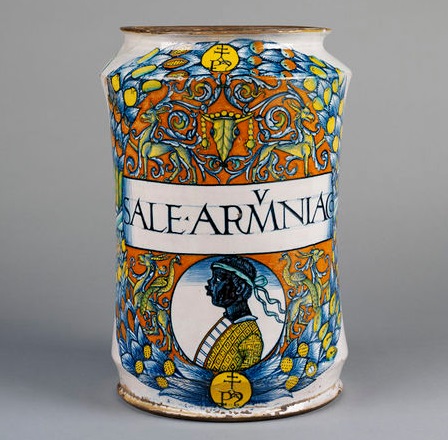
A DERUTA MAIOLICA WAISTED ALBARELLO
circa 1540
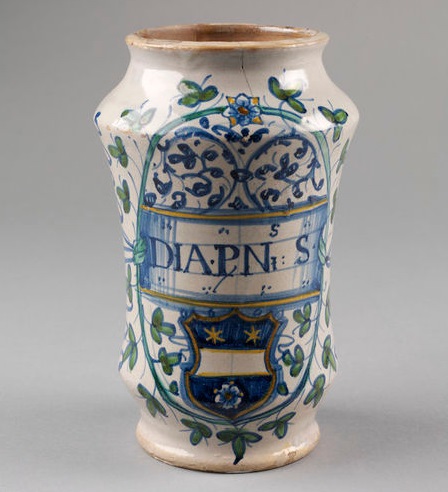
A DERUTA MAIOLICA TWO-HANDLED DRUG JAR
circa 1480
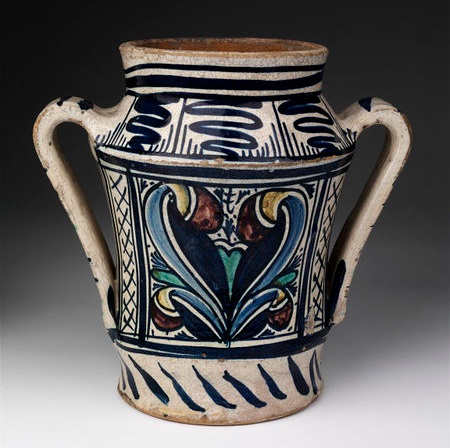
A DERUTA MAIOLICA PLATE
circa 1520
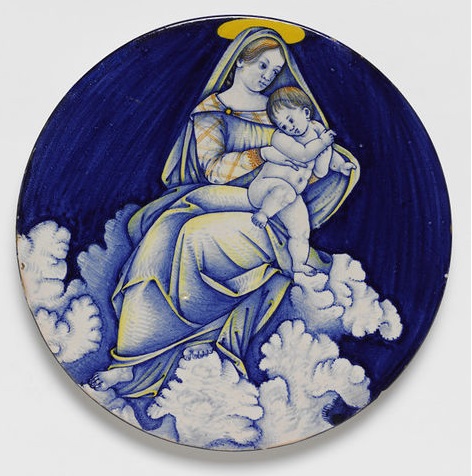
A DERUTA MAIOLICA PLATE
circa 1550
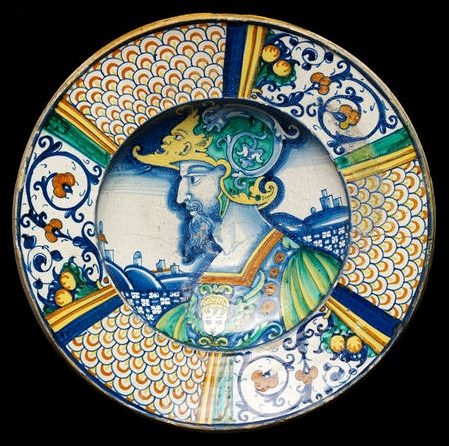
A DERUTA MAIOLICA ALBARELLO
circa 1500
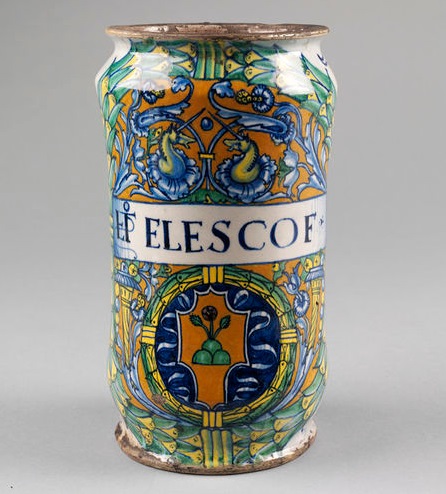
A DERUTA MAIOLICA WET DRUG JAR
circa 1510
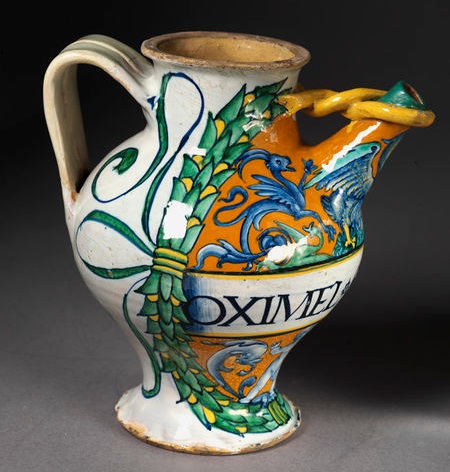
A DERUTA MAIOLICA ALBARELLO
circa 1450
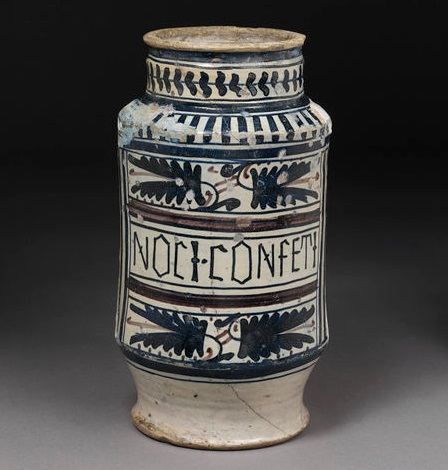
A DERUTA MAIOLICA BOTTLE
circa 1540
